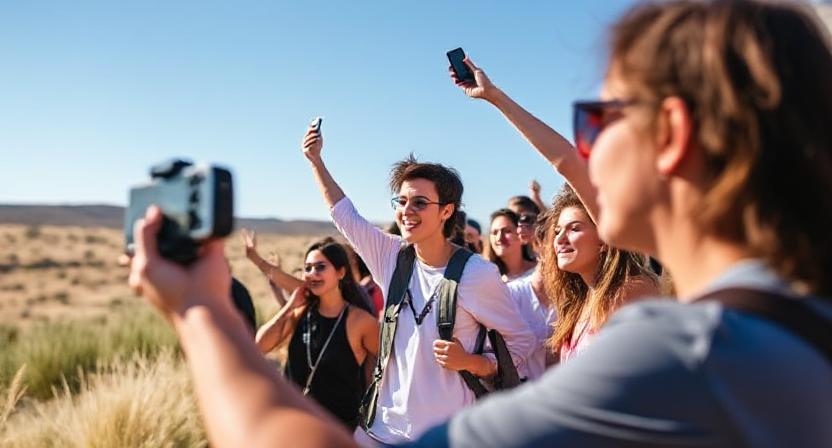Introduction
The rise of the Influencer Gonewild movement is a striking reflection of today’s evolving digital culture, where personal branding, monetization, and unfiltered self-expression intersect. As more influencers blur the lines between lifestyle content, the term “Influencer Gonewild” has emerged to describe a new subculture within the creator economy, one that sparks fascination, debate, and controversy. But what exactly is this movement, and what does its growth tell us about the future of social media, online identity, and digital entrepreneurship?
This article explores the key factors driving the rise of the Influencer Gonewild movement, examines the tradeoffs and ethical challenges involved, and highlights why understanding this trend is crucial for audiences, platforms, and policymakers alike.
What Is the Influencer Gonewild Movement?
At its core, the Influencer Gonewild movement refers to a phenomenon where influencers often from lifestyle, fashion, fitness, or gaming backgrounds pivot into or incorporate risqué, suggestiveness into their online persona. The term itself borrows from internet slang, evoking the idea of public figures “going wild” or crossing traditional boundaries of acceptability.
This movement is not about explicit content alone; it’s about influencers reclaiming control over their image, body, and brand in a monetizable way. Platforms like OnlyFans, Fansly, and even Instagram and TikTok (to a more limited extent) have become tools for influencers to redefine what influence means in a hyper-competitive creator economy.
Key Factors Driving the Movement
1. Monetization Pressure
With ever-changing algorithms and declining ad revenues, influencers face constant pressure to monetize creatively. Subscription-based services offer a more stable income than unpredictable brand deals or ad payouts. The Influencer Gonewild model offers direct-to-fan monetization, something many creators find empowering and lucrative.
2. Platform Evolution and Accessibility
The rise of creator-centric platforms makes it easier than ever to produce, share, and monetize provocative content. Features like paywalls, subscriber-only feeds, and controlled content licensing give influencers more tools and more reasons to engage in the Gonewild space.
3. Demand from Niche Communities
The internet enables micro-communities to flourish. The Influencer Gonewild model taps into the demand for authenticity mixed with intimacy. Fans are willing to pay for content that feels exclusive and personal even if it challenges societal norms.
Tradeoffs and Tensions
While the movement brings financial and creative benefits to some influencers, it also raises a series of tradeoffs and concerns:
⚖️ Empowerment vs. Exploitation
While many influencers describe their participation as empowering, critics argue that the movement still operates within a framework that rewards objectification. Determining whether this shift truly empowers creators — or simply packages exploitation under a new guise — remains a central debate.
🎯 Audience Expectations vs. Personal Boundaries
Influencers who transition into the Gonewild space may face backlash from existing fans or struggle to maintain boundaries as audience expectations change. Once personal content becomes commodified, reclaiming privacy or shifting back can be difficult.
💼 Brand Safety vs. Authenticity
From a business standpoint, involvement in the Influencer Gonewild movement can limit sponsorships or cause friction with traditional brands. Yet it may also enhance perceived authenticity, which is highly valued in the digital age.
👮 Regulatory and Ethical Gray Areas
There’s a growing conversation around what constitutes ethical content, especially when underage users may encounter material that skirts the line of platform guidelines. Content moderation, age verification, and regulation remain complex and unresolved issues.
Challenges for Stakeholders
For Influencers
Maintaining a balance between personal autonomy, audience engagement, and long-term brand reputation is a delicate act. Many face stigma, emotional burnout, or unwanted attention, even as they benefit from financial gains.
For Platforms
Social media companies must navigate a fine line: encouraging user engagement while enforcing community standards. They also face increased scrutiny over how algorithms amplify certain types of content and how that impacts user safety and public perception.
For Audiences
The movement forces viewers to reflect on their own boundaries, values, and consumption habits. Supporting creators while acknowledging the broader implications of this content can be challenging for some fans.
Why It Matters
Understanding the rise of the Influencer Gonewild movement isn’t just about gossip or voyeurism it’s about decoding deeper shifts in online culture. This trend reflects:
- New models of digital entrepreneurship
- The blurred lines between public and private personas
- An evolving media landscape where visibility and intimacy are intertwined
For content creators, brands, parents, educators, and platform developers, understanding these dynamics is key to making informed decisions about engagement, partnership, and digital policy.
Conclusion
The Influencer Gonewild movement is a multifaceted trend fueled by economic, cultural, and technological forces. While it offers new opportunities for self-expression and revenue, it also raises important questions about privacy, ethics, and the future of influencer culture.
Balancing these factors requires ongoing dialogue, critical awareness, and a willingness to see beyond stereotypes. As the digital landscape continues to evolve, staying informed about movements like this with all their complexities is more essential than ever.
